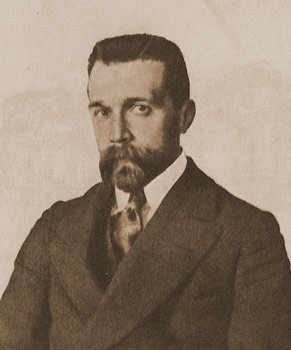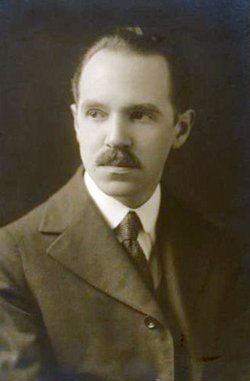Antonín Dvořák
(1841-1904)
(1841-1904)
Carnival Overture (1891)
Much in the same vein as today - where we are celebrating the return of the musicians and their audience, Antonín Dvořák’s Carnival Overture is a celebration of life. He composed this work in the height of his career. He was about to embark on a move to the United States, having just accepted a post as Director of the National Conservatory of Music of America, based in NYC. This piece premiered in Prague in April of 1892. Shortly after, in October of the same year, it was introduced to the New World, and to the hungry ears of the American audience.
The Carnival Overture was composed as part of a triptych of works, originally titled “Nature, Life, and Love” intended to be performed together. Eventually these became three separate pieces - “Nature’s Realm”, “Carnival”, and “Othello”. This work conveys the boisterous energy of the carnival setting. And Brahms even called it “merry”! The best description, or course, comes from the composer’s own words, “The lonely, contemplative wanderer reaches the city at nightfall, where a carnival is in full swing. On every side is heard the clangor of instruments, mingled with shouts of joy and the unrestrained hilarity of people giving vent to their feelings in their songs and dance tunes.”
Those feelings are easily transferrable to our current day situation, having just emerged from the social solitude that the pandemic restrictions have placed upon us.
Dvorak - Carnival | Miaskovsky - Cello | Griffes - Poem | R-K - Scheherazade | Table of Contents
Nikolai Miaskovsky
(1881-1950)
(1881-1950)
Cello Concerto (1944-45)
Nikolai Miaskovsky was born in what is today, Poland, but back then - the Russian Empire. He was the son of an engineer officer in the Russian Army. He lived most of his adult life in Soviet Russia. As a composer, he has been called the”Father of Soviet Symphony” and won the Stalin Prize for Composer several times.
Miaskovsky was raised by his aunt, who was a singer in the St. Petersburg Opera. As a youth, he was discouraged from pursuing a career in music. So he entered the military. But somewhere in his early adult years, he heard a performance of Tchaikovsky’s 6th Symphony (Pathétique). That experience turned him around and inspired him to become a composer. He then became a student of Nikolai Rimsky-Korsakov and a lifelong friend to composer Sergei Prokofiev.
The Cello Concerto in C minor was written in the later years of his life. It was dedicated to, and performed by Knushevitsky, a renowned Soviet-Russian Cellist. It is a hauntingly beautiful piece which hints at Tchaikovsky’s 6th Symphony in the opening - recall that this symphony was so influential to our composer in his early years. It is “melodious… and subtly balanced by the odd melancholic rumination” (M. Ross, 2007, Hyperion Records).
How does such depth and feeling come from a time and place in the Soviet era where things were on such lockdown? Well, even though Miaskovsky lived and worked in the Stalinist years, he was occasionally seen as individualistic by the Soviet Government. According to the 1920’s critic, Boris Asafiev, “he reflects life not through the feeling and spirit of the masses, but through the prism of his personal feelings”. And yet, as a testament to the tenacity of the human spirit, his artistry and the beauty of his music has shone through any artificially imposed systems defined by the governing regime.
Dvorak - Carnival | Miaskovsky - Cello | Griffes - Poem | R-K - Scheherazade | Table of Contents
Charles Griffes
(1884-1920)
(1884-1920)
Poem (1918)
Unlike the rest of the resident composers on tonight’s program, Charles Griffes was an American composer - heavily influenced by the style of the Musical Impressionists.
Born in Elmira, NY, which was also a long time home of writer Mark Twain, Griffes studied music and was considered by all accounts to be a great performer. However, his passion lay in composition, and that is what he chose to pursue. His later body of works make him an American representative of the Impressionist era, whose most famous champions were Maurice Ravel and Claude Debussy. There are definitely parts of Poem that hint at the influence of Debussy’s Afternoon of a Faun (Matthew Mugmon, 2013).
In his personal life, Griffes lived in a challenging time - held back from expressing his true self because homosexuality was not openly accepted. He kept separate this whole community of friends from his “regular life”. But this was the community that he turned to - who supported him to find housing and navigate his way through The City (G. Chauncey, 1995). His life and his contributions to the musical annals of history were taken away too soon, as he succumbed to the 1918 Spanish Flu pandemic. His body of work was quite prolific considering his all too brief life. Even though his works, such as Poem, do not get the same play time as some of his contemporaries, one can hope that appreciation of his works will grow the more they get showcased on the musical stage.
Dvorak - Carnival | Miaskovsky - Cello | Griffes - Poem | R-K - Scheherazade | Table of Contents
Nikolai Rimsky-Korsakov
(1844-1908)
(1844-1908)
Scheherazade (1888)
Who wouldn’t love a thematic tribute to a tale that has stood the test of time - the Tale of 1001 Arabian Nights. This work is one a few pieces that Rimsky-Korsakov is most remembered for - the others being Capriccio Espagnol and Russian Easter Overture.
The story is of the Sultana Scheherazade, who saves her own life through the power of her words and her brain. In the composer’s own words, “The Sultan Schariar, convinced that all women are false and faithless, vowed to put to death each of his wives after the first nuptial night. But the Sultana Scheherazade saved her life by entertaining her lord with fascinating tales, told in succession, for a thousand and one nights. The Sultan, consumed with curiosity, postponed from day to day the execution of his wife, and finally repudiated his bloody vow entirely.”
This piece was written during a time when Europe had a fascination with the East and all things Oriental. According to American musicologist Richard Taruskin, he characterizes Orientalism in Romantic Russian music as having melodies "full of close little ornaments and melismas," in addition to “chromatic accompanying lines, drone bass” - all of which serve to evoke “not just the East, but the seductive East”. These attributes can also be found in the works of Glinka, Balakirev, Borodin, Lyapunov, and Rachmaninov.
While the basis of this potentially murderous story seems foreign in the modern day and age, it illustrates the great successes that human beings can achieve with just clever use of the mind - not to mention the clever use of Rimsky-Korsakov’s mind for having composed such an earworm! For its time, the music was cutting edge. It inspired a ballet which premiered 22 years later - rife with the themes of fascination with the “seductive” East - the dancers showcasing more sensuous dance moves compared to the classical ballet of the time period.
According to Rimsky-Korsakov’s memoirs:
“The program I had been guided by . . . consisted of separate, unconnected episodes and pictures from The Arabian Nights, scattered through all four movements of my suite. . . . The unifying thread consisted of the brief introductions to the first, second, and fourth movements and the intermezzo in movement three, written for violin solo and delineating Scheherazade herself as she tells her wondrous tales to the stern Sultan. The final conclusion of the fourth movement serves the same artistic purpose”
Listen for the intertwining themes of the Sultan (in the low brass and woodwinds), and the Sultana (represented by the undulating phrases of the violin), and immerse yourself in the tales within the tale composed by Rimsky-Korsakov.
Dvorak - Carnival | Miaskovsky - Cello | Griffes - Poem | R-K - Scheherazade | Table of Contents




